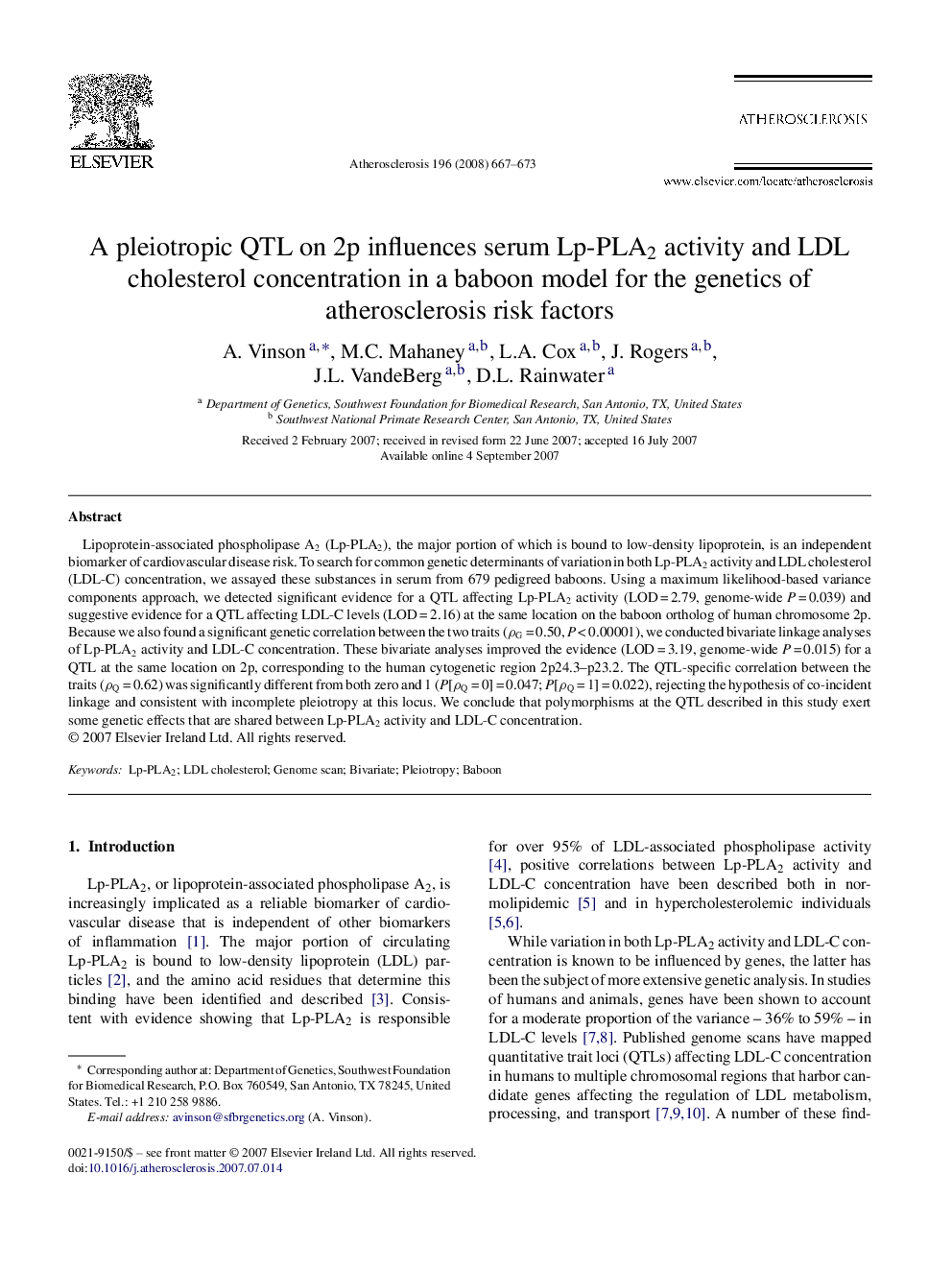| Article ID | Journal | Published Year | Pages | File Type |
|---|---|---|---|---|
| 2894034 | Atherosclerosis | 2008 | 7 Pages |
Lipoprotein-associated phospholipase A2 (Lp-PLA2), the major portion of which is bound to low-density lipoprotein, is an independent biomarker of cardiovascular disease risk. To search for common genetic determinants of variation in both Lp-PLA2 activity and LDL cholesterol (LDL-C) concentration, we assayed these substances in serum from 679 pedigreed baboons. Using a maximum likelihood-based variance components approach, we detected significant evidence for a QTL affecting Lp-PLA2 activity (LOD = 2.79, genome-wide P = 0.039) and suggestive evidence for a QTL affecting LDL-C levels (LOD = 2.16) at the same location on the baboon ortholog of human chromosome 2p. Because we also found a significant genetic correlation between the two traits (ρG = 0.50, P < 0.00001), we conducted bivariate linkage analyses of Lp-PLA2 activity and LDL-C concentration. These bivariate analyses improved the evidence (LOD = 3.19, genome-wide P = 0.015) for a QTL at the same location on 2p, corresponding to the human cytogenetic region 2p24.3–p23.2. The QTL-specific correlation between the traits (ρQ = 0.62) was significantly different from both zero and 1 (P[ρQ = 0] = 0.047; P[ρQ = 1] = 0.022), rejecting the hypothesis of co-incident linkage and consistent with incomplete pleiotropy at this locus. We conclude that polymorphisms at the QTL described in this study exert some genetic effects that are shared between Lp-PLA2 activity and LDL-C concentration.
